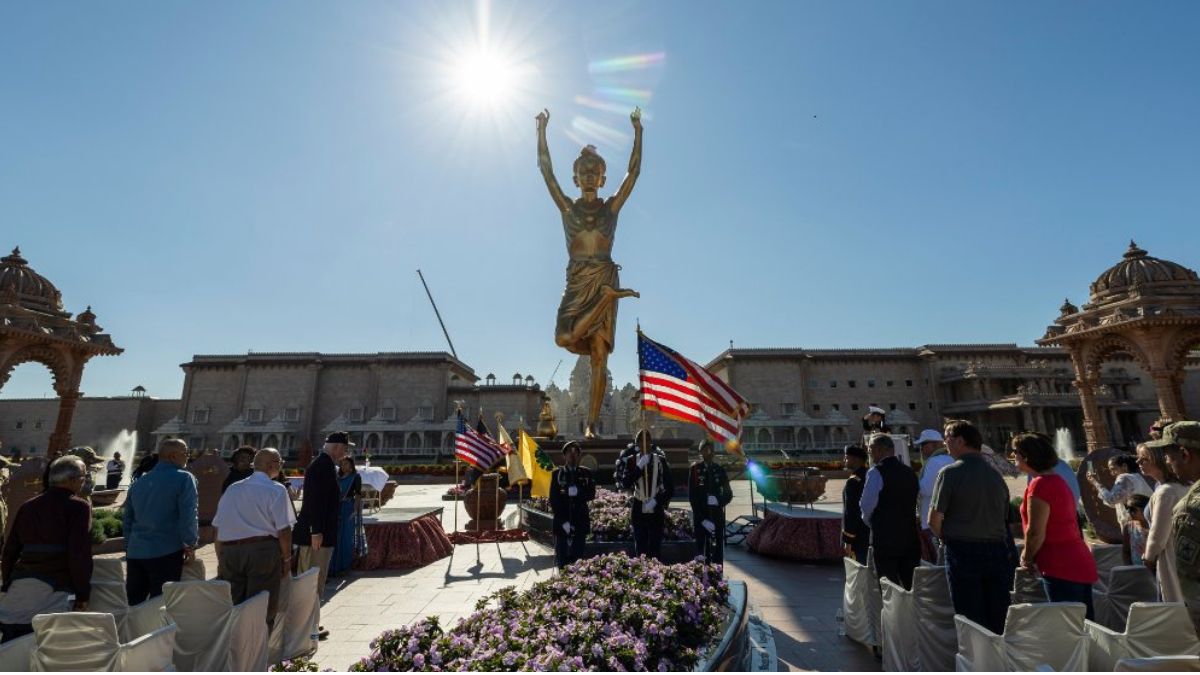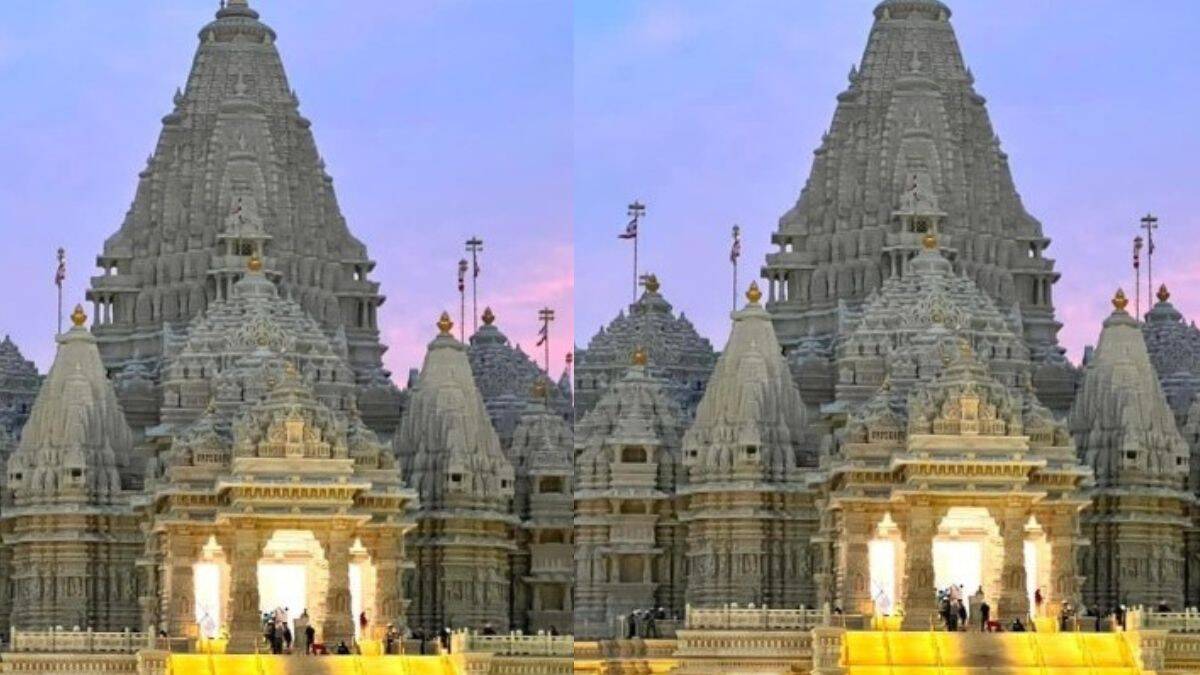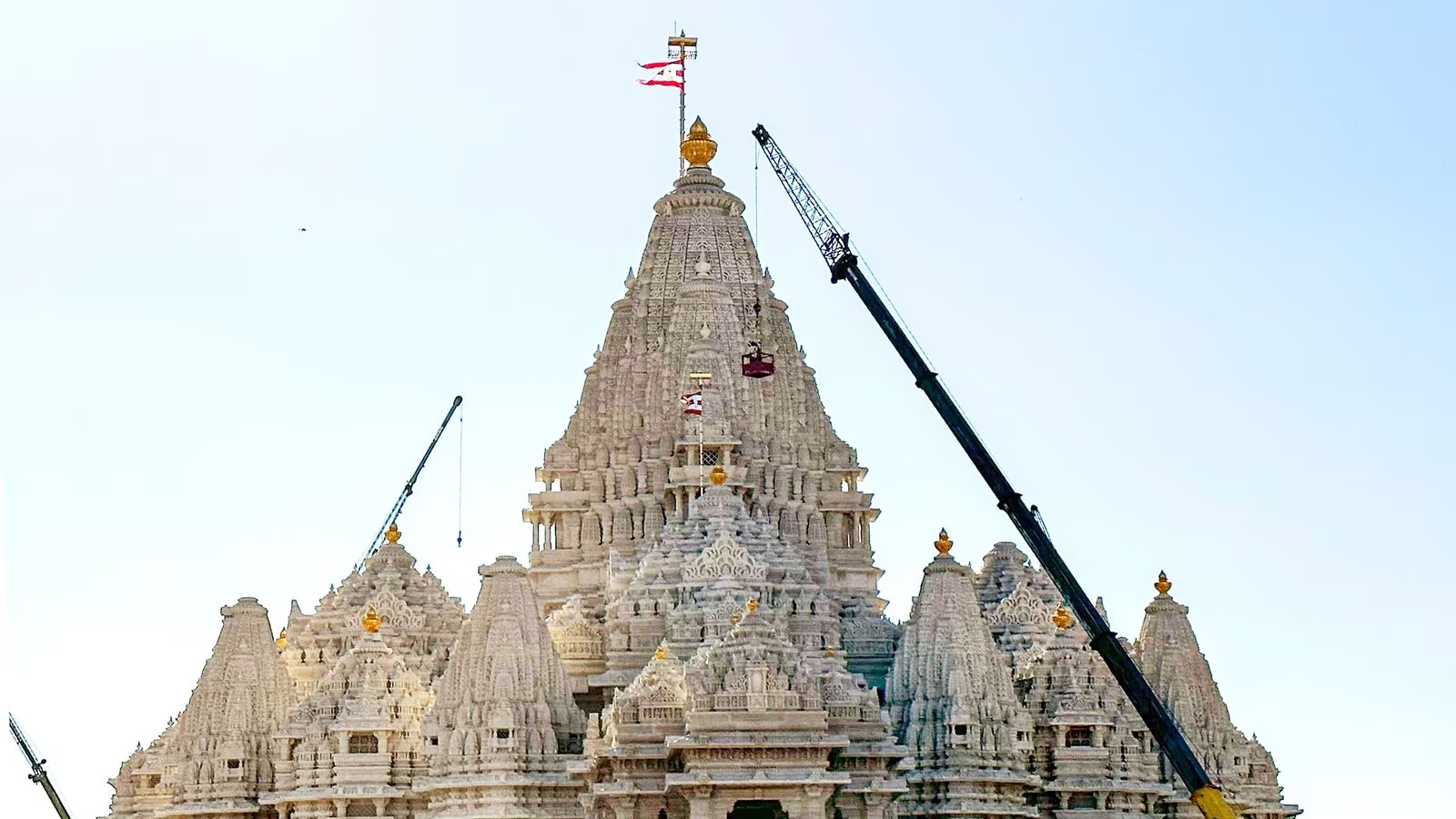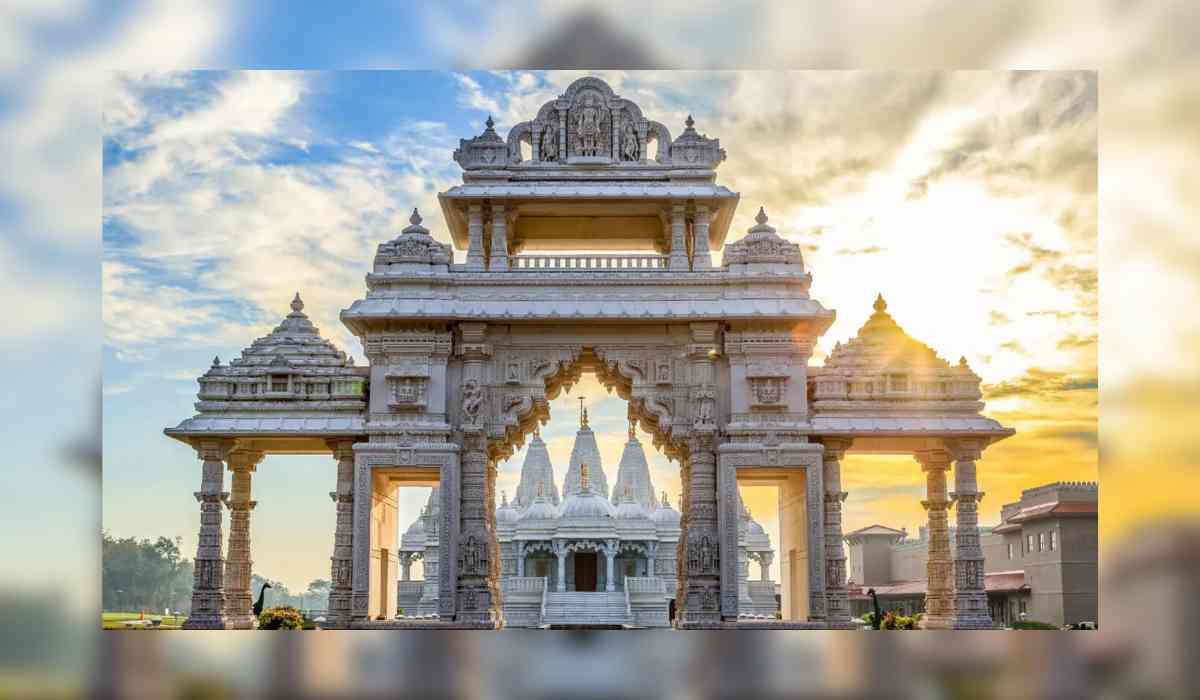The magnificent Swaminarayan Akshardham in Robbinsville Township, New Jersey, is set to be formally inaugurated on October 8, with the spiritual guidance of Mahant Swami Maharaj. Following this auspicious event, the breathtaking temple will open its doors to visitors starting on October 18, as reported by PTI.
A Temple Like No Other: A Glimpse into Swaminarayan Akshardham
Standing as the world's second-largest temple constructed outside of India, the Swaminarayan Akshardham is a colossal structure, measuring an astonishing 255 ft x 345 ft x 191 ft, encompassing an expansive 183-acre site. Every aspect of its design pays homage to ancient Hindu scriptures and echoes the essence of Indian culture. With an array of 10,000 statues and statuettes, intricate carvings of Indian musical instruments, and vibrant dance forms, the temple serves as a captivating testament to India's rich heritage.

A Temple of Grandeur: Second Only to Angkor Wat
The New Jersey Akshardham temple stands as a remarkable architectural wonder, ranking possibly as the second-largest temple globally, only surpassed by Cambodia's Angkor Wat. The Angkor Wat Temple Complex, dating back to the 12th century, sprawls across an astonishing 500 acres and holds the title of the world's largest Hindu temple, now designated as a UNESCO World Heritage site. Swaminarayan Akshardham's design features a main shrine, 12 sub-shrines, nine shikhars (spire-like structures), and nine pyramidal shikhars, with the highlight being the largest elliptical dome of traditional stone architecture ever constructed, designed to withstand the test of time for a millennium.

A Vision Realized: A Temple for Universal Values
Pramukh Swami Maharaj, the spiritual leader of BAPS Swaminarayan Sanstha, envisioned a place in the Western hemisphere that would welcome people from all walks of life, transcending the boundaries of religion and nationality. The temple represents a hub of universal values deeply rooted in Hindu tradition, as Swami Aksharvatsaldas from BAPS Swaminarayan Sanstha shared in an exclusive interview with PTI. He emphasized that the temple's construction adheres to the principles of traditional Hindu temple architecture, fulfilling Pramukh Swami Maharaj's cherished wish and pledge.
The construction of this magnificent temple was made possible by the dedication of over 12,500 volunteers across the United States, who toiled tirelessly from 2011 to 2023 under the guidance of artisan volunteers from India. This act of volunteerism is deeply ingrained in Hindu tradition, representing a meritorious undertaking. The sheer scale of the Maha mandir attracted a growing number of volunteers who recognized this as a once-in-a-lifetime opportunity for service.

Materials and Sustainability: A Testament to Tradition and Innovation
The temple's construction required nearly two million cubic feet of stone, sourced from diverse locations worldwide. Materials included limestone from Bulgaria and Turkey, marble from Greece, Turkey, and Italy, granite from India and China, as well as sandstone from India and decorative stones from Europe and Asia.
The temple complex also features the Brahma Kund, a traditional Indian stepwell containing water from over 300 bodies of water worldwide, including the holy rivers of India and all 50 states of the US. The commitment to sustainability is evident through the temple's solar panel farm, the use of fly ash concrete mix, and the planting of over two million trees across the globe in recent decades—a testament to the enduring values upheld by BAPS Swaminarayan Sanstha.
© Copyright 2023. All Rights Reserved Powered by Vygr Media.























